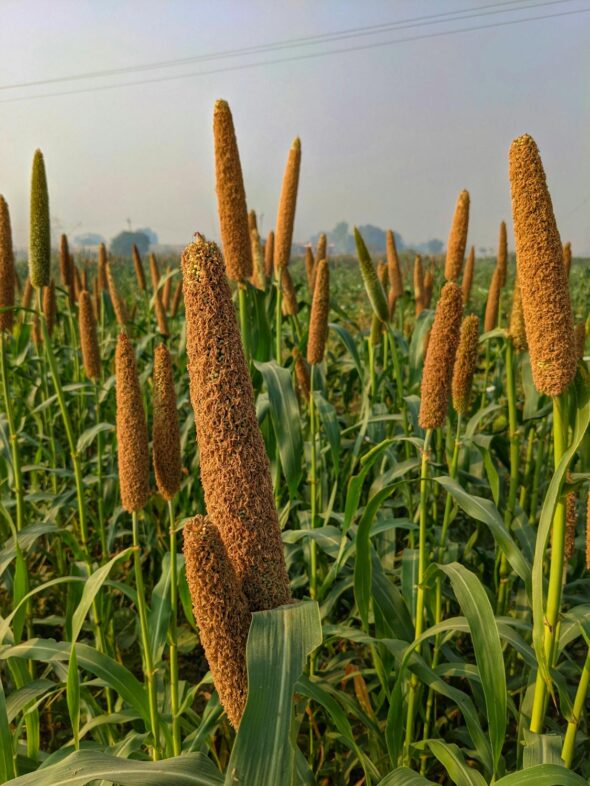Millets in India Are Fueling a Health Revolution, Sustainable Farming, and Growing Market Demand Across the Nation
June 10, 2025: India is witnessing a significant surge in the demand and consumption of millets in India, traditional grains that once formed the backbone of the Indian diet. As the country battles rising lifestyle diseases and environmental challenges, millets are being rediscovered for their nutritional value, resilience, and sustainability.
Why Are Millets Gaining Popularity?
1. Nutritional Benefits
Millets are rich in fiber, protein, iron, calcium, and antioxidants. With a low glycemic index, they help regulate blood sugar levels, making them excellent for individuals with diabetes or heart issues. They support weight management, improve digestion, and reduce the risk of chronic diseases.
2. Health-Conscious Lifestyle
More Indians are moving toward natural and unrefined foods. This trend is driven by awareness of the dangers of processed foods and the benefits of ancient grains. Millets are now commonly found in urban households, fitness diets, and gluten-free meal plans.
3. Government Promotion and Global Focus
The Indian government, under programs like the National Food Security Mission (NFSM) and POSHAN Abhiyaan, is actively promoting millet cultivation and consumption. The International Year of Millets (2023), championed by India and recognized by the United Nations, brought global attention to these crops.
What Is Millet Called in India?
Millets in India are commonly referred to as “Shree Anna” or coarse cereals. Regional names include ragi (finger millet), jowar (sorghum), bajra (pearl millet), and kangni (foxtail millet), reflecting their deep cultural roots across states.
What Are 5 Examples of Millets?
Here are five commonly consumed millets in India:
Ragi (Finger Millet)
Bajra (Pearl Millet)
Jowar (Sorghum)
Kangni (Foxtail Millet)
Kodo Millet
These grains are versatile and used in rotis, porridge, dosa, snacks, and baked goods.
What Are the 11 Types of Millet?
India is home to a diverse range of millets. The major 11 types are:
Finger Millet (Ragi)
Pearl Millet (Bajra)
Sorghum (Jowar)
Foxtail Millet
Little Millet
Kodo Millet
Barnyard Millet
Proso Millet
Browntop Millet
Broomcorn Millet
Guinea Millet
Each type has its own nutrient profile and culinary applications.
Is Suji a Millet?
No, suji (also known as semolina) is not a millet. It is made from refined wheat and lacks the fiber and nutrient density found in millets. However, millet-based suji alternatives are now being developed and promoted as healthier, gluten-free options.
Agricultural and Economic Impact
Millets are climate-smart crops, ideal for India’s semi-arid regions. They require less water and fertilizer, and can grow in poor soils—supporting sustainable farming and food security. Millet farming offers economic resilience to farmers facing unpredictable weather and crop failures.
Market Growth and Innovations
India’s millet-based product market is expanding quickly. Companies are launching:
Millet cookies, noodles, and breakfast mixes
Gluten-free millet flours
Ready-to-eat meals and snacks
Millet-based beverages and energy bars
Urban cafés and health brands are blending traditional millets into modern, appealing formats.
Public Distribution and Institutional Inclusion
States like Karnataka and Odisha have integrated millets into the Public Distribution System (PDS) and midday meal schemes, enhancing both farmer income and child nutrition.
Conclusion
The renewed interest in millets in India is transforming health habits, agriculture, and food security. As awareness grows and innovation continues, millets are set to become a permanent, powerful part of India’s dietary future.

Leave a Reply